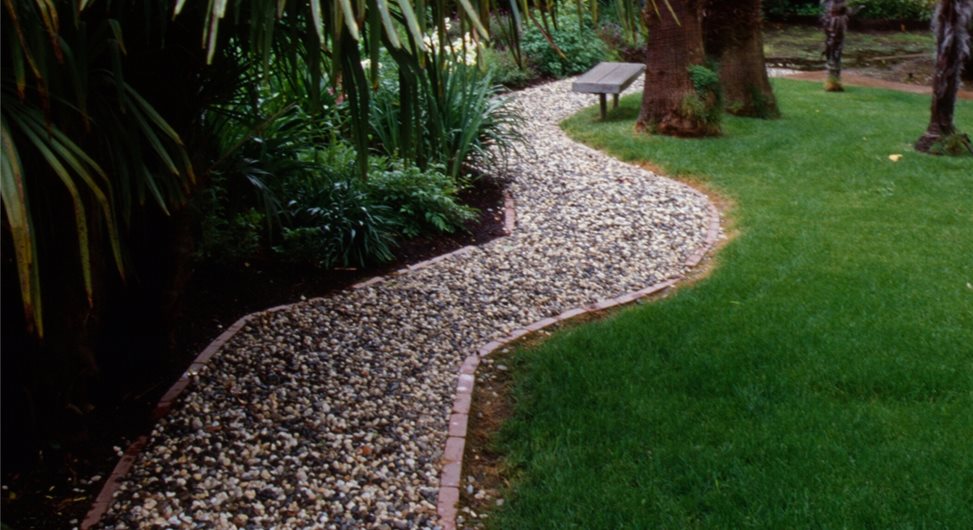One of the most destructive things to befall any landscaping is flooding.
Whether the flooding is caused by days of continuous torrential rain, waters from a nearby source such as a river or lake busting their banks, or closer to home, a burst pipe or water main, the potential destruction of much of your landscaped garden is a real possibility.
Water is something that can be a double-edged sword for gardens. Gardens could not survive if they did not get enough water, and yet, if there is too much of it and the garden floods, then the opposite can be the result and the garden and most of the things that grow in it can meet their demise.
Thankfully, not every encounter with water is as destructive as those which we have just outlined.
Normal rainfall, or when you are watering your garden are occasions when your garden will be thankful for water. However, even these seemingly positive interactions with water can lead to issues, especially with lawns and plant beds. If the drainage within your garden does not function as it should you must take steps to rectify this situation.
Problems Caused By Poor Drainage
- Flooding: We have already discussed how flooding can occur, but it is the damage it can do which should attract the most attention. Although destroying plants within your garden is bad enough, severe flooding can weaken the foundations of your property and seep into your home causing even more destruction to flooring and carpets, for example.
- Standing Water: This harms your garden in several ways. It can effectively drown plants, flowers, and vegetables, it makes walkways slippery and dangerous, and it acts as a breeding ground for fungus, mould, bugs, and other pests which simply add to the destructive forces caused by the excess water in your garden.
- Erosion: Poor drainage and excess water in your garden, including flooding, can negatively impact the soil within it. The water can cause soil to be washed away, it can move it a considerable distance from where it should be, and in doing so, it can create imbalances in the soil structures and depths with your landscape design.
Ways To Resolve Poor Drainage In A Landscape Garden
- Lawn Aeration: Probably the easiest and simplest way to improve drainage from your lawn is to aerate it effectively. The small holes you create not only allow air and nutrients to reach roots, but the holes also help to drain water from the surface.
- Extend Downpipes: Downpipes help remove water from roofs but if the outlet at the bottom is too near areas that flood then it can cause issues. The solution is to add an extension on the bottom of the downpipe so that it directs water elsewhere, ideally, directly into a drain.
- Rain Barrels: These can either be placed below downpipes to collect all the water or where the guttering is known to overflow during rainstorms. The collected water can be used for watering plants when drier weather returns.
- Create A Drain Channel: Some surfaces might allow water to run off but, due to the gradients, water accumulates and floods specific areas. This can be resolved by creating a narrow trench that acts as a channel to divert all the water away from the area that floods.
- Switch Hard Walkway Materials: Solid surfaces such as concrete and stone flagstones, may be directing water to areas in your garden that flood. As a way of countering this, you could consider swapping out your current walkway materials and replacing them with gravel or more porous materials, for example, which would allow water to seep through.
- Add A Drainage Pipe: If all else fails, it might be that you have to take more comprehensive action and one which is proven to work is adding one or more additional drainage pipes beneath the surface of your landscaped garden. It might cost time, money, and some disruption, but it will be worth it when the drainage within your landscaped garden becomes effective.


